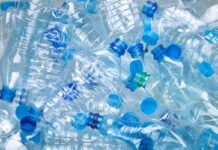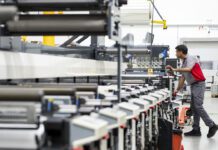
Developing new kinds of recyclable fibre-based products is the aim of an initiative in Scandinavia, which aims to reduce energy and resource consumption in the forestry and textile industry.
The goal of the Energy First initiative, says VTT Technical Research Centre of Finland, is to act as a starting point for an entirely new technology, creating “the conditions for the manufacture of low-carbon, energy-efficient, and recyclable fibre-based products”.
With trends such as the continued growth of global e-commerce, the demand for fibre-based packaging is projected to grow 5–10% annually.1 It needs to be easy to recycle and have a low carbon footprint. Within non-wovens, used in napkins and wipes for example, VTT said it expects a strong shift away from traditional products (that contain plastic) towards cellulose-based products.
It has a budget of around 20 million euros over the next four years, and consists of several projects, with collaborative research aiming to develop and test commercially viable, sustainable alternatives for cardboard packaging, hygiene products, and non-woven fabrics.
According to VTT, preliminary estimates suggest the new manufacturing process will provide a reduction of up to 90% in water consumption and a significant decrease in carbon emissions. Overall, the goal is to reduce energy consumption by up to 50%.
Products manufactured with the new process are designed to be compatible with existing recycling methods. Furthermore, fibre-based packaging is produced in a way that makes it a sustainable alternative to reusable packaging, said the group. The planned EU packaging and packaging directive requires that both the raw material and the manufacturing process are sustainable, and recyclable bio-based packaging solutions will have to undergo a sustainability assessment.
The project also seeks to redefine the forest industry’s environmental impact and enhance the competitiveness of fibre-based products. For example, by making the products lighter, more products could be produced for consumer use from the same amount of wood, which improves resource efficiency.
“We feel that the Energy First project is one of the first steps in unlocking the full potential of airlaid technology2 in sustainable single-use and durable product categories. Anpap3 has set the benchmark for the airlaid industry for the past 40 years, and we have a strong commitment to keep developing the technology to enable the transition to next-generation sustainable products. Compared to wetlaid, airlaid web forming is flexible and consumes dramatically less natural resources, such as water, which reduces the environmental impact of manufacturing and while satisfying the needs of consumers,” says Tuukka Vihtakari, CTO, Anpap.
The initiative is funded by EU, ERDF, VTT and the collaborating companies. The consortium is also engaging with EU projects, such as EU SteamDry, with a total budget of 9.84 million euros over 3.5 years.
Notes
[1] According to data from Statista Market Insights and eMarketer
[2] The term refers to a manufacturing process used to produce nonwoven materials, particularly those made from natural fibres like cellulose, wood pulp, or a mixture of various fibres. This technology involves forming a web of fibres using air as the medium to distribute them, rather than traditional textile processes like weaving or knitting.
[3] A Finnish manufacturer of airlaid machinery






